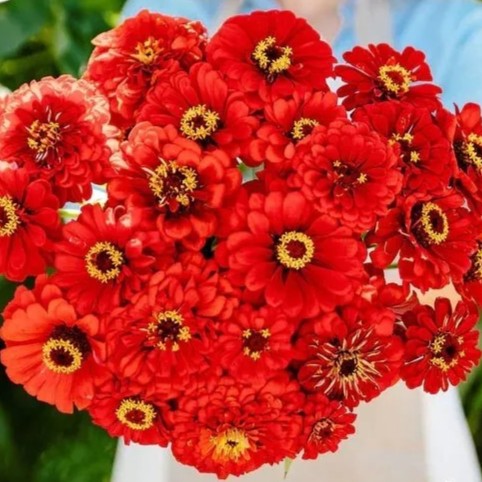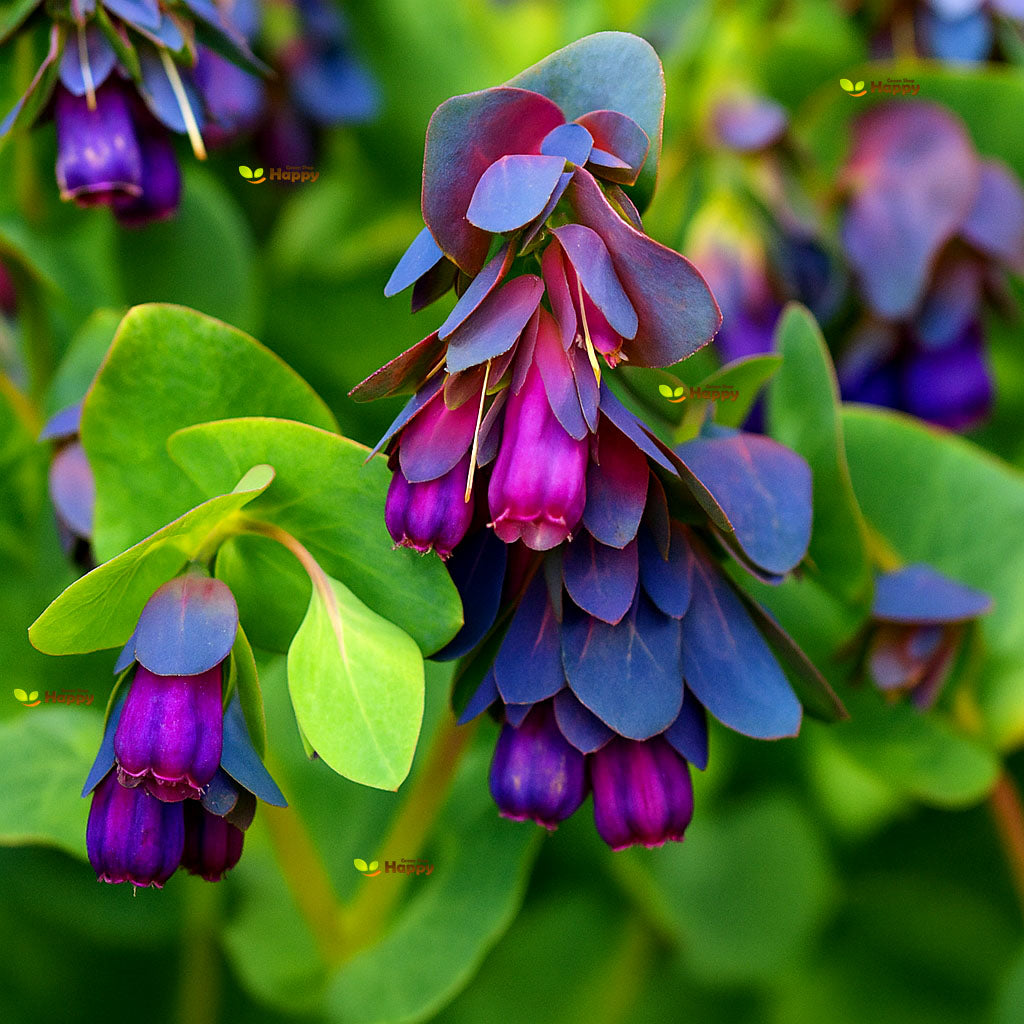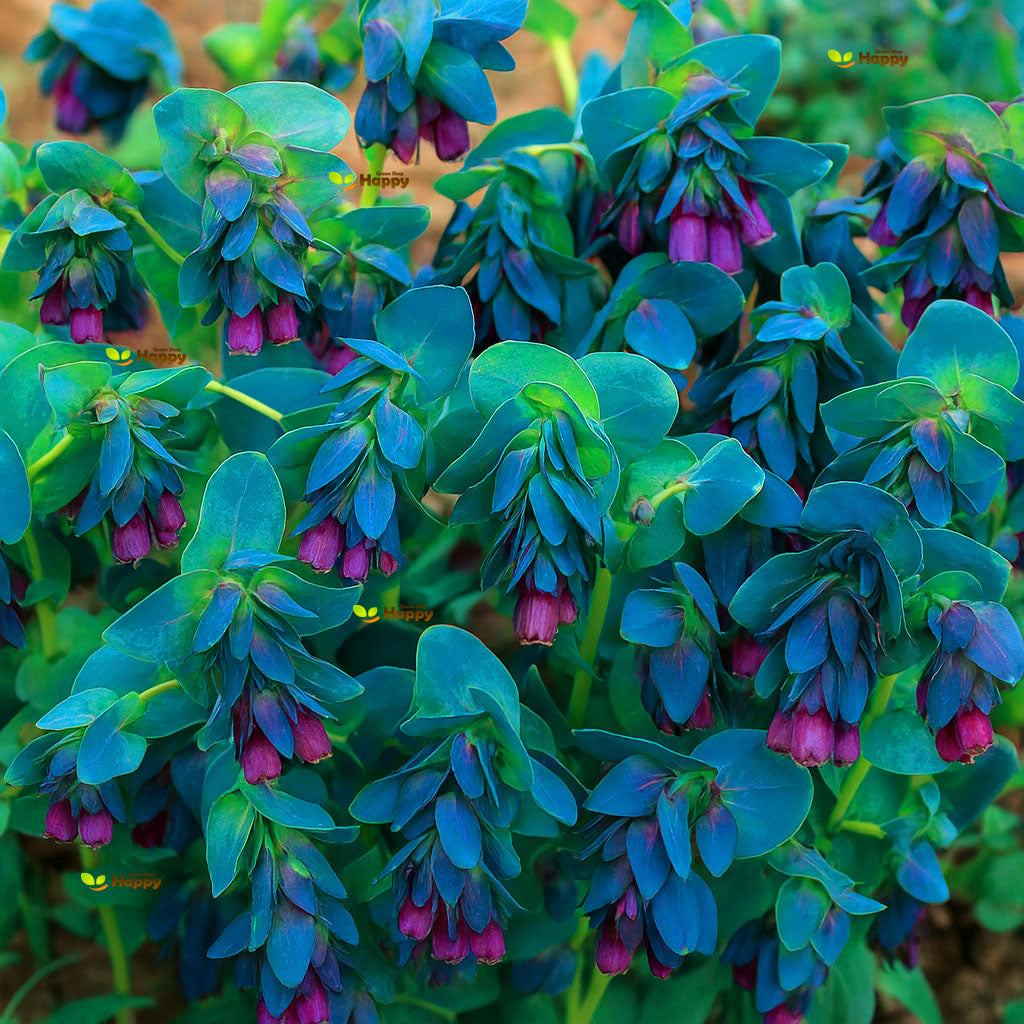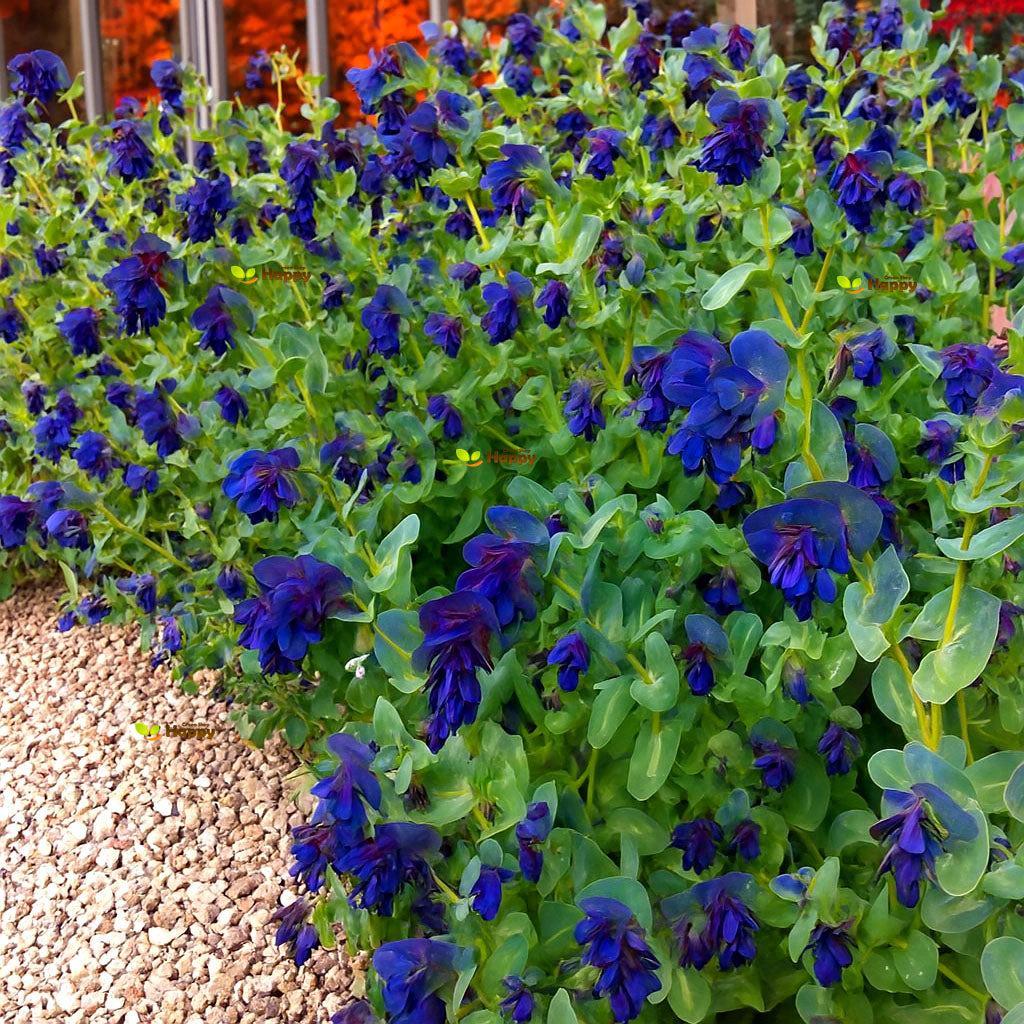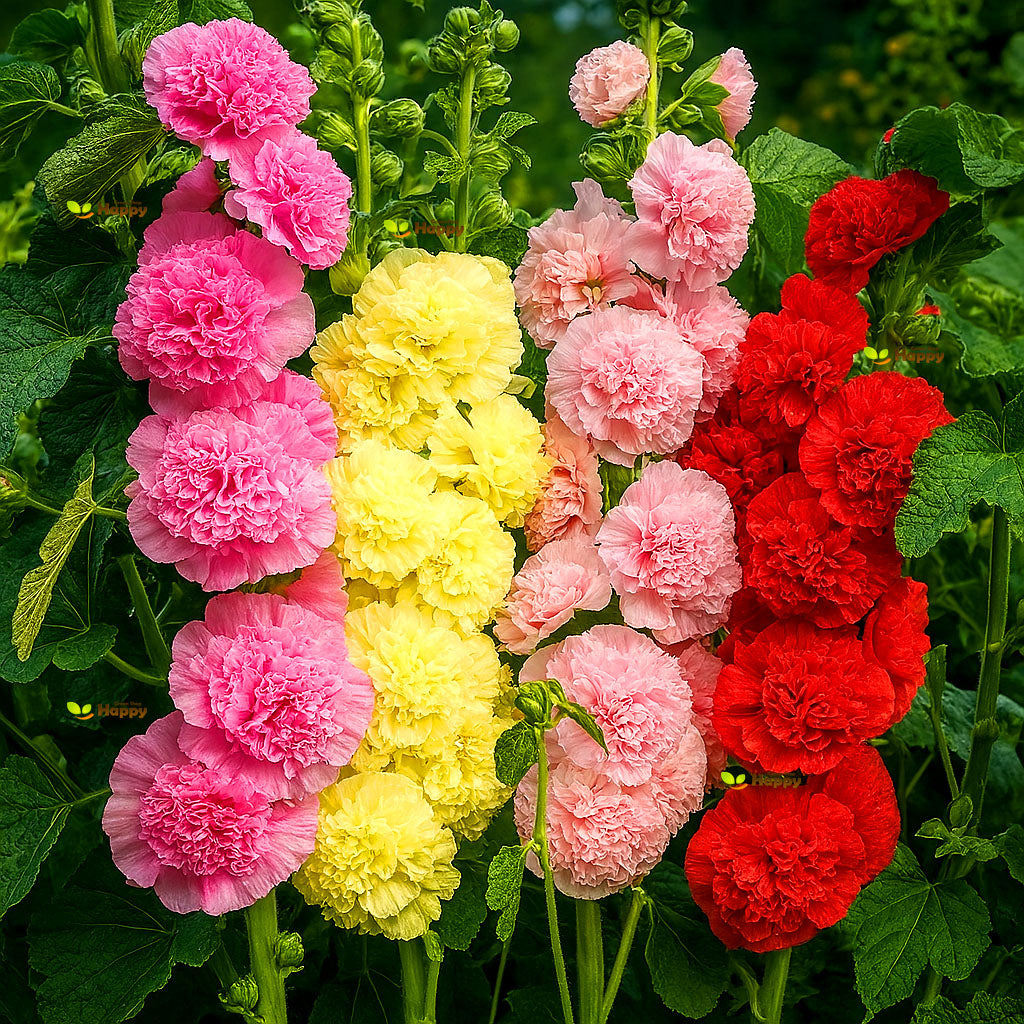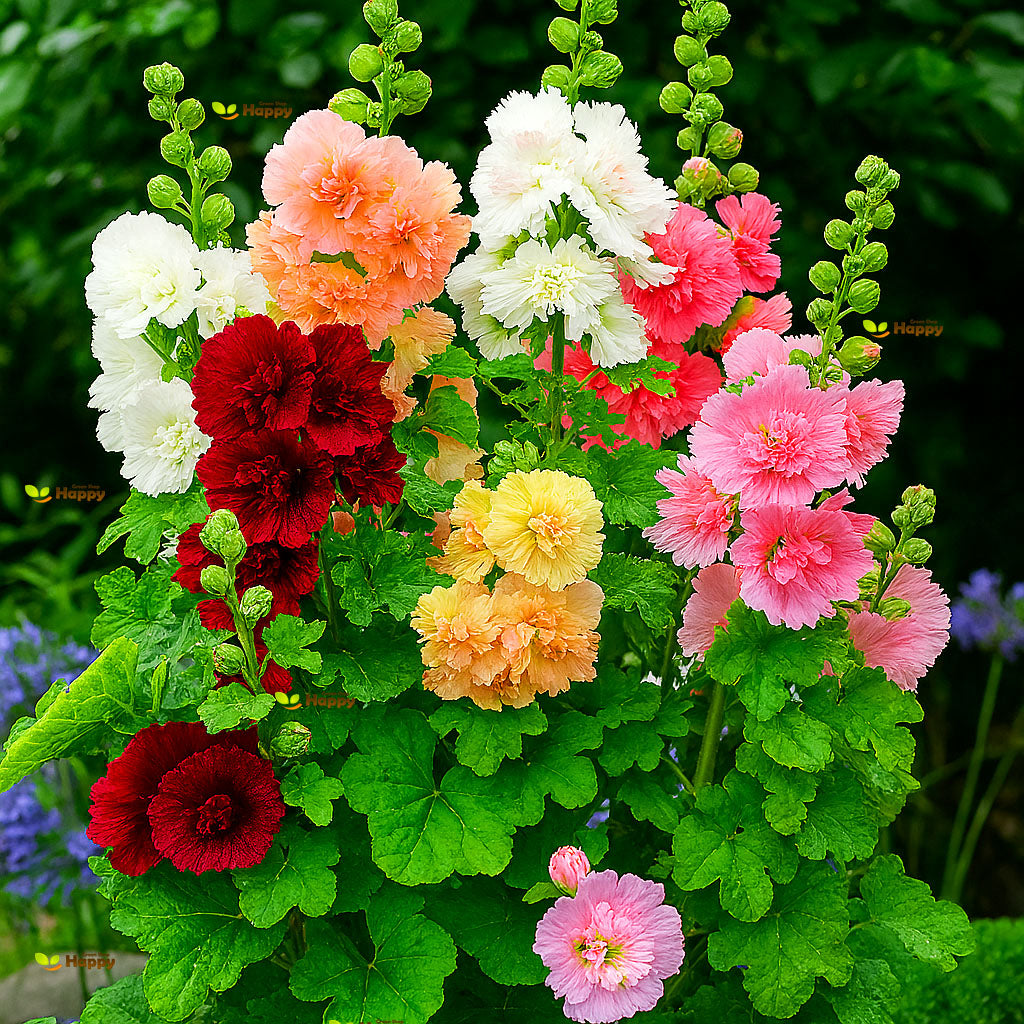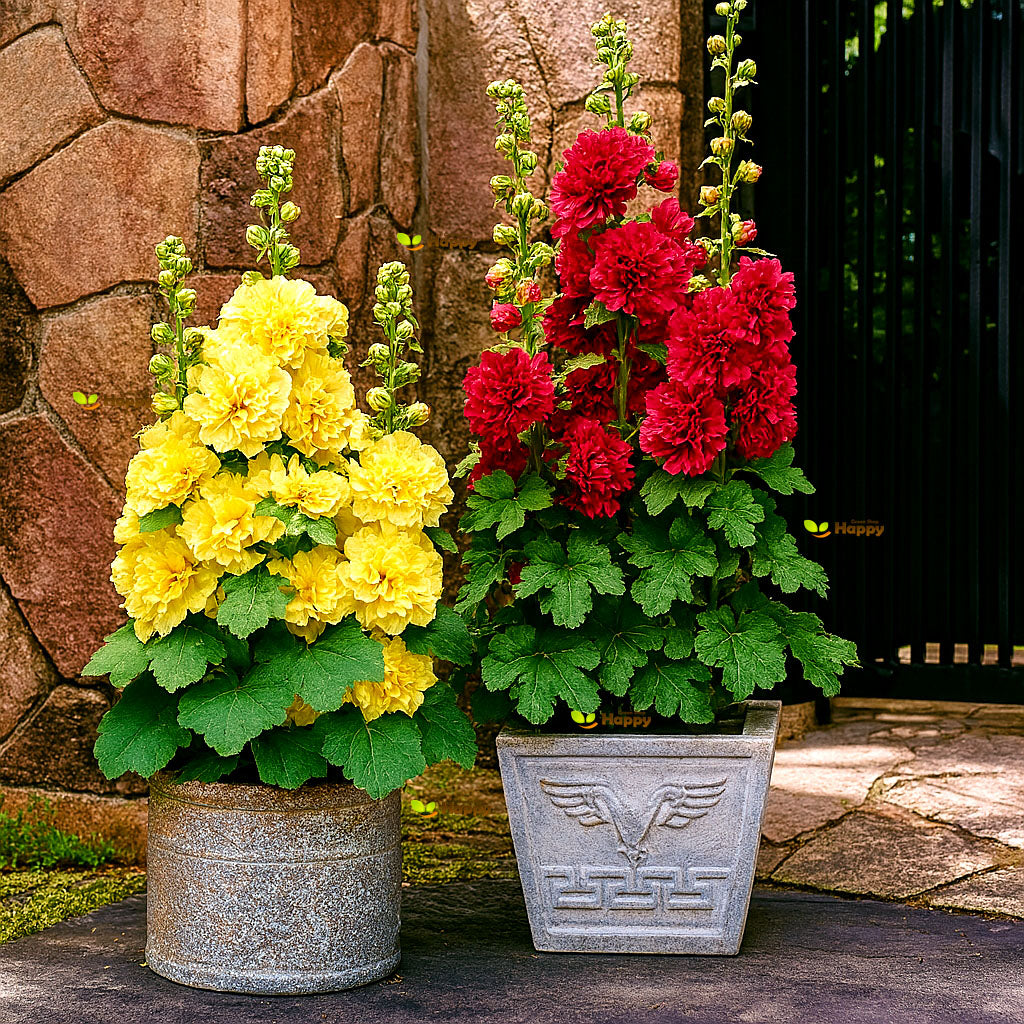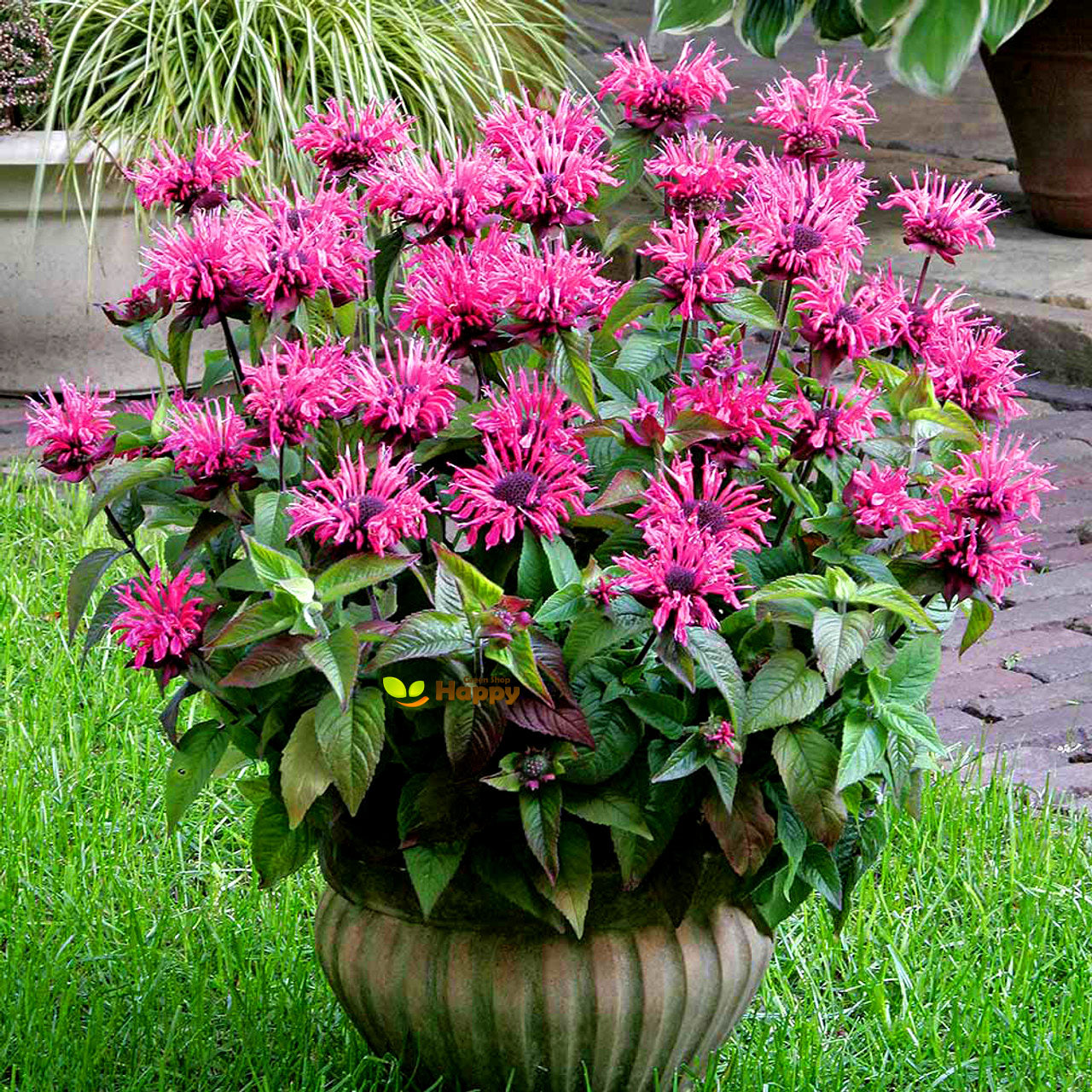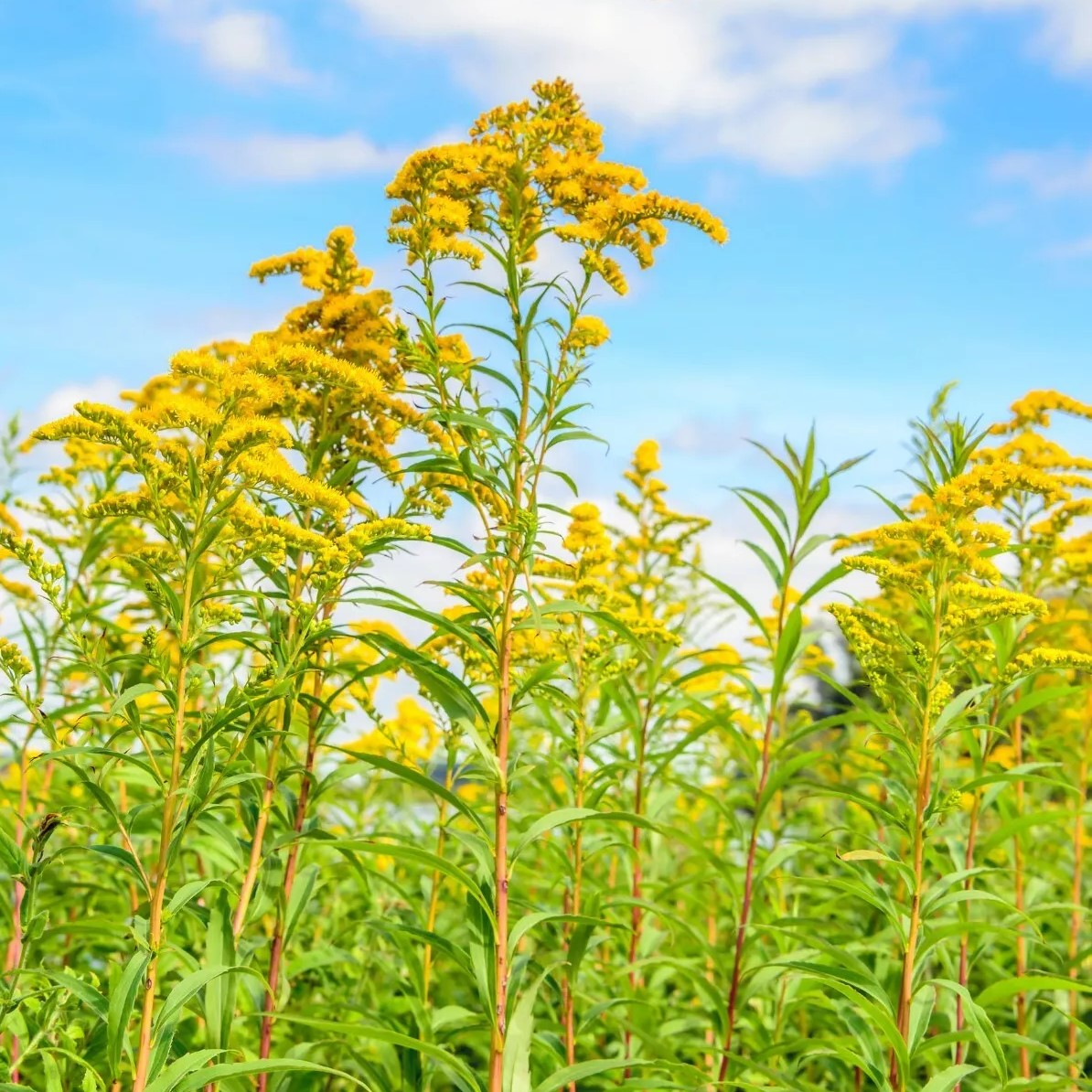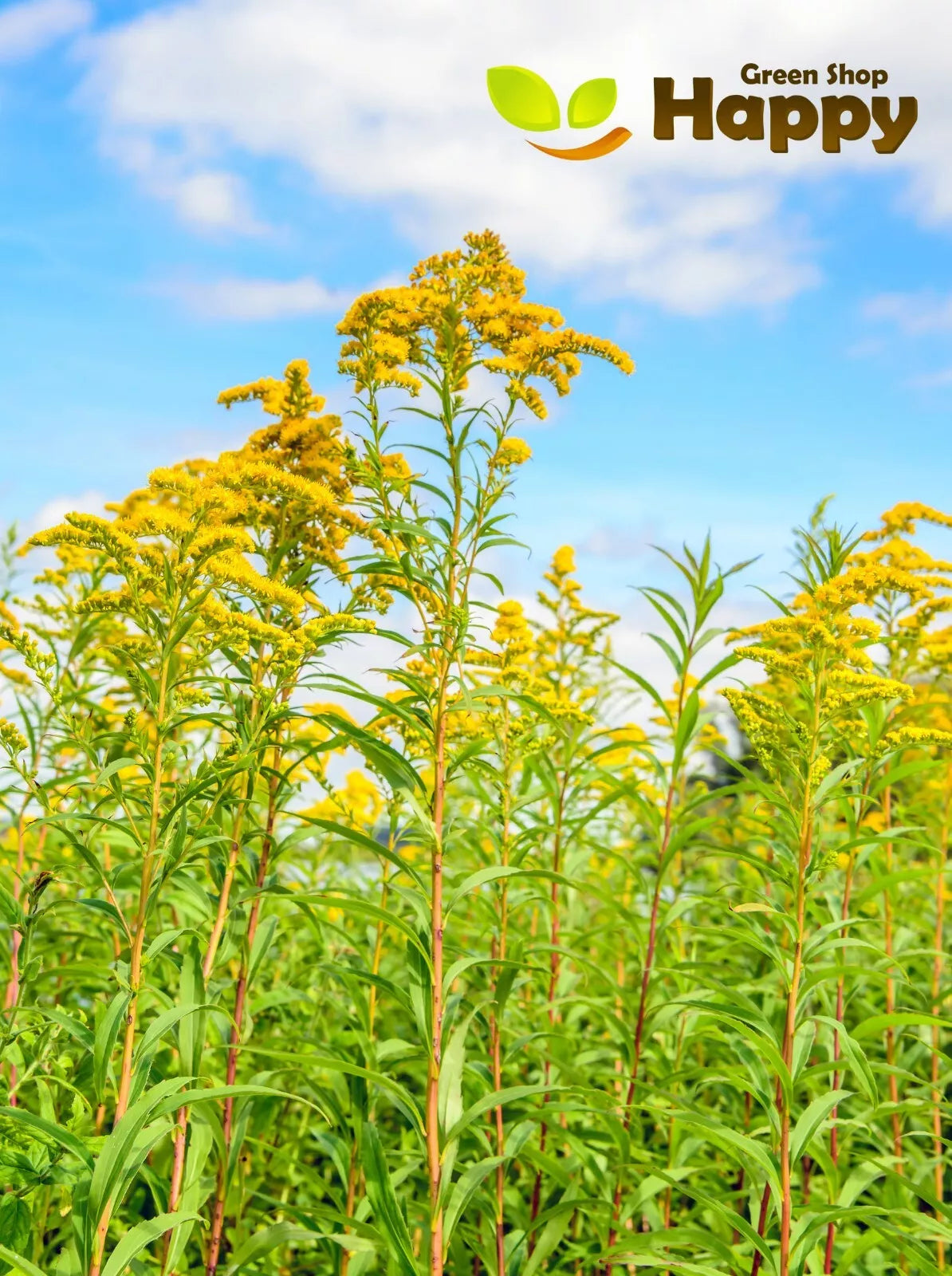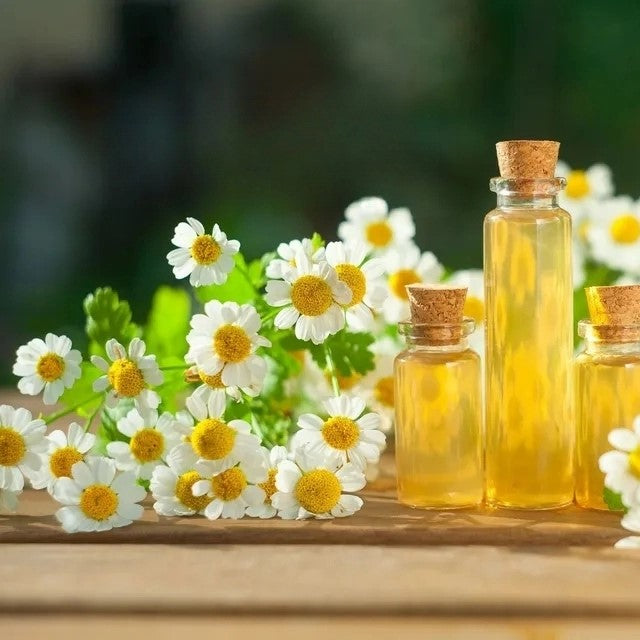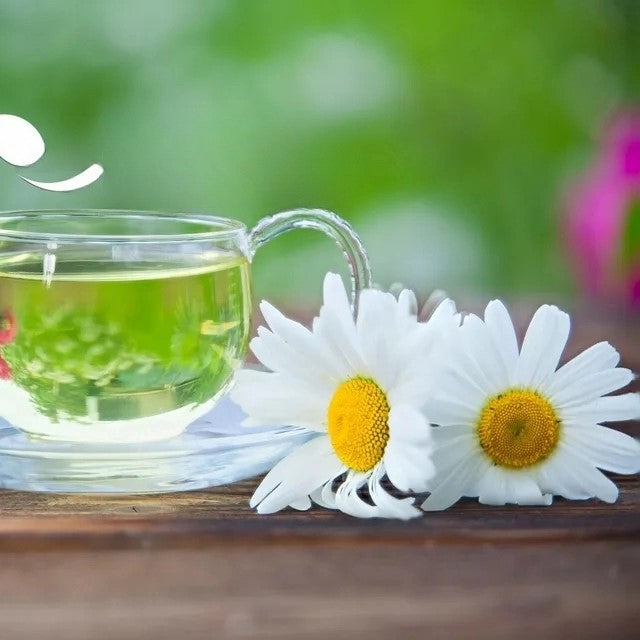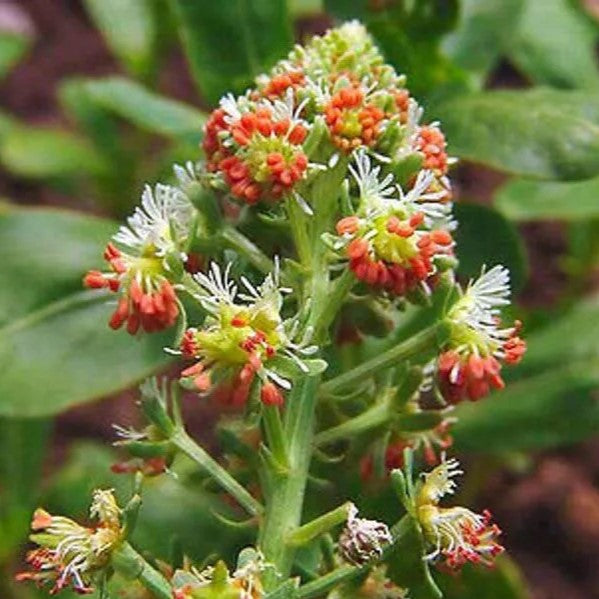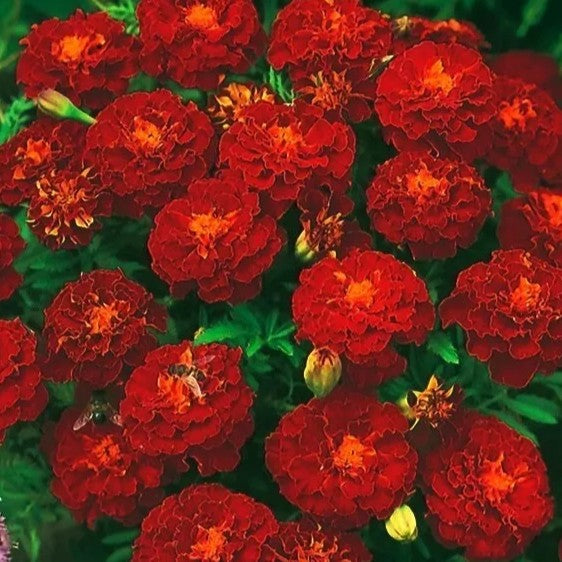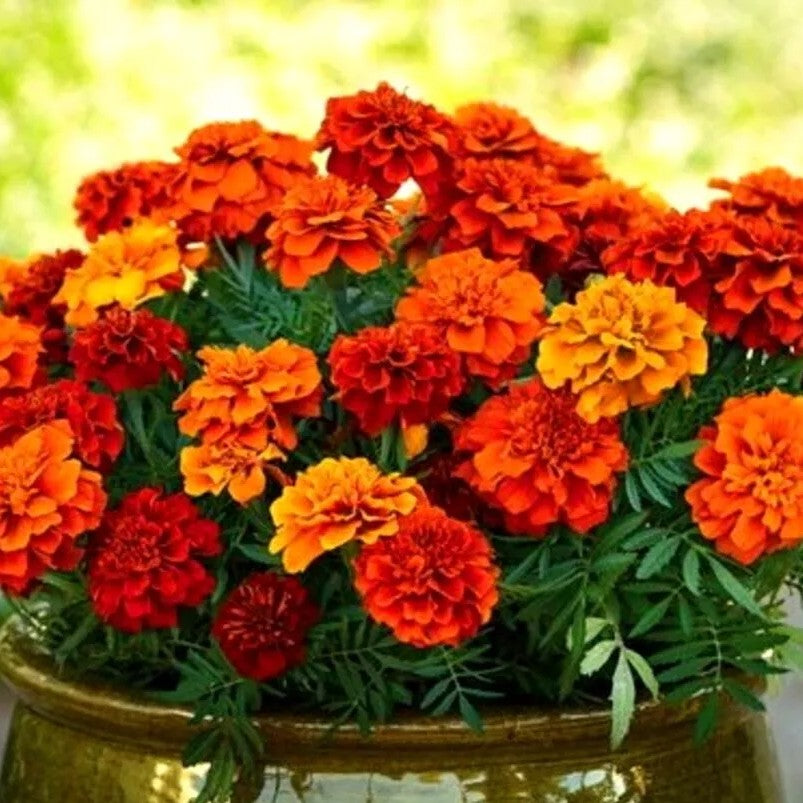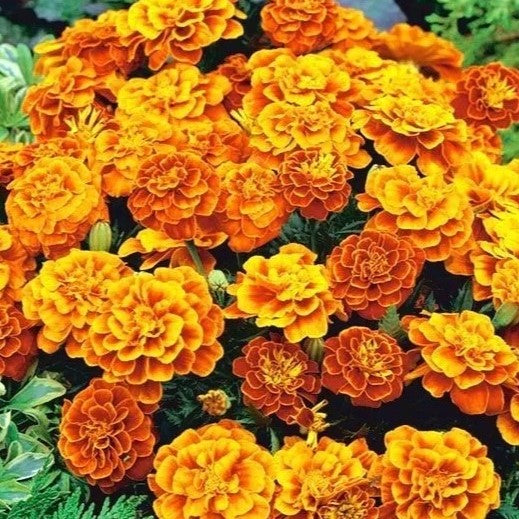Sort by:
128 products
128 products
Honeywort – Seeds (Cerinthe major)
Honeywort (Cerinthe major) is an eye-catching annual with striking blue-purple tubular flowers and silvery-green foliage. Loved by bees and other pollinators, it adds unique texture and color to borders, cottage gardens, and wildflower mixes. Fast-growing and low-maintenance, it thrives in sunny, well-drained spots.
Why Grow "Honeywort"
-
Striking blue-purple tubular flowers
-
Silvery-green, ornamental foliage
-
Attracts pollinators including bees and butterflies
-
Easy to grow and low-maintenance
Key Features
-
Type: Hardy annual (Cerinthe major)
-
Height: 40–60 cm
-
Flowering: June–September
-
Position: Full sun, well-drained soil
-
Uses: Borders, cottage gardens, wildflower mixes, pollinator gardens
Ideal For
-
Pollinator-friendly gardens
-
Cottage and naturalistic borders
-
Adding height and color contrast
-
Wildflower plantings
Sowing & Growing
-
Sow outdoors: March–May in prepared soil
-
Germination: 10–20 days at 18–22°C
-
Thin seedlings to 25 cm apart
-
Prefers full sun and well-drained soil
-
Deadhead to encourage prolonged flowering
Hollyhock ‘Chaters Double Triumph Mix’ Seeds (Althaea rosea)
A true cottage garden classic, the Hollyhock ‘Chaters Double Triumph Mix’ produces tall, stately flower spikes adorned with large, fully double blooms in a rich blend of colors – from soft pastels to vibrant shades. These majestic perennials (often grown as biennials) create a dramatic vertical accent at the back of borders, alongside walls, or in wildflower-style gardens.
What Makes It Special
-
Stunning double blooms in a wide range of colors
-
Impressive tall spires up to 1.8–2.5 m high
-
Attracts bees, butterflies, and pollinators
-
A long-standing favorite in cottage and traditional gardens
Key Features
-
Botanical name: Althaea rosea
-
Common name: Hollyhock Chaters Double Triumph Mix
-
Seed count: Approx. per pack (customizable)
-
Height/Spread: 180–250 cm tall, 50–60 cm spread
-
Position: Full sun; well-drained fertile soil
-
Flowering period: July – September (second year from sowing)
-
Lifespan: Hardy biennial/perennial
Ideal For
-
Cottage and traditional garden borders
-
Planting against walls and fences
-
Pollinator-friendly gardens
-
Creating dramatic vertical height in displays
Sowing Instructions
-
When to sow: Indoors March–May or directly outdoors May–June.
-
How to sow:
-
Sow seeds thinly in trays or pots of moist seed compost, cover lightly.
-
Keep at 15–20°C for germination (14–21 days).
-
Transplant seedlings when large enough, spacing 45–60 cm apart.
-
-
Care: Provide support in exposed areas. Deadhead faded flowers to encourage further blooming.
Hollyhock ‘Majorette Double’ Mix – Seeds (Althaea rosea)
The Hollyhock ‘Majorette Double’ Mix is a stunning dwarf variety producing fully double flowers in a wide range of colors, including pink, red, yellow, and white. Compact and bushy, it is perfect for smaller gardens, borders, and containers while still giving that classic cottage garden charm.
Why Grow ‘Majorette Double’?
-
Fully double blooms in a vibrant color mix
-
Shorter, dwarf habit compared to traditional tall hollyhocks
-
Long summer flowering season
-
Attracts bees and pollinators
Key Features
-
Type: Half-hardy biennial (often flowers in the first year)
-
Height: 60–80 cm
-
Flowering: June–September
-
Position: Full sun, well-drained soil
-
Uses: Borders, containers, cottage garden plantings
Ideal For
-
Smaller gardens and courtyards
-
Adding vertical interest without excessive height
-
Pollinator-friendly spaces
Sowing & Growing
-
Sow indoors: February–April in trays or pots
-
Sow outdoors: May–June directly in soil
-
Germination: 14–21 days at 18–20°C
-
Transplant seedlings 40–50 cm apart
-
Deadhead faded flowers for extended blooming
HERB BEE BALM SEEDS (Monarda didyma)
Add vibrant color and fragrance to your garden with Herb Bee Balm. This perennial produces striking red, pink, or purple flowers atop aromatic foliage, attracting bees, butterflies, and hummingbirds. Easy to grow and low-maintenance, it’s perfect for borders, beds, and pollinator-friendly gardens.
Why Grow "Herb Bee Balm"
-
Showy, fragrant flowers in red, pink, or purple
-
Attracts bees, butterflies, and hummingbirds
-
Low-maintenance, long-flowering perennial
-
Enhances borders, beds, and pollinator gardens
Key Features
-
Type: Perennial (Monarda didyma)
-
Height: 60–90 cm
-
Flowering: Summer (June–September)
-
Position: Full sun to partial shade
-
Uses: Borders, flower beds, pollinator gardens, containers
Ideal For
-
Adding vibrant color and fragrance to borders and beds
-
Pollinator-friendly gardens
-
Containers and patio planting
-
Beginner gardeners seeking easy-to-grow perennials
Sowing & Growing
-
Sow indoors: 6–8 weeks before the last frost
-
Sow outdoors: After frost danger has passed
-
Germination: 10–20 days
-
Space seedlings: 30–40 cm apart
-
Prefers well-drained soil and full sun for best flowering
Golden Rod ‘Yellow Springs’ – 2000 Seeds (Solidago canadensis)
The Golden Rod ‘Yellow Springs’ is a hardy perennial that produces tall spikes of tiny golden-yellow flowers, creating a striking late-summer display. A magnet for bees and butterflies, it’s ideal for naturalistic gardens, meadows, and wildlife-friendly plantings. Easy to grow, drought-tolerant, and low-maintenance.
Why Grow ‘Yellow Springs’?
-
Tall, elegant spires of golden-yellow blooms
-
Attracts pollinators and supports biodiversity
-
Drought-tolerant and hardy perennial
-
Excellent for cut flowers and meadow planting
Key Features
-
Type: Perennial
-
Height: 100–150 cm
-
Flowering: July–September
-
Position: Full sun, well-drained soil
-
Uses: Borders, wildflower gardens, meadows, cut flowers
Ideal For
-
Pollinator-friendly gardens
-
Naturalized meadow plantings
-
Adding vertical height and late-season color
Sowing & Growing
-
Sow indoors: February–April, lightly cover seeds
-
Sow outdoors: April–June in prepared soil
-
Germination: 14–21 days at 18–22°C
-
Thin or transplant seedlings 30–40 cm apart
-
Cut back in autumn after flowering
German Chamomile – Seeds (Matricaria recutita)
Bring calm and fragrance to your garden with German Chamomile, a charming annual herb prized for its daisy-like white flowers and soothing aroma. Traditionally used for herbal teas and natural remedies, this variety is easy to grow, highly productive, and also attracts pollinators to your garden. A perfect choice for herb beds, borders, and pots.
How to Grow
. Sow indoors from February to April, lightly pressing seeds onto the surface of moist compost – do not cover as they need light to germinate
. Transplant seedlings outdoors after the last frost, spacing 20–25 cm apart
. Alternatively, sow outdoors directly in April to May in well-drained soil
. Prefers a sunny position with average to light soil
. Water sparingly, as chamomile thrives in slightly dry conditions
Key Features
. Delicate white blooms with yellow centers
. Traditional herb for calming teas and remedies
. Attracts bees, butterflies, and beneficial insects
. Easy to grow, tolerant of poor soils
. Ideal for borders, herb gardens, and containers
Ideal For
. Herbal tea lovers and home remedies
. Pollinator-friendly gardens
. Cottage gardens and borders
. Container growing
Sowing & Harvest
. Sow: February – May
. Harvest: June – September
Quick Tip
Harvest flowers on warm, dry days and dry them for homemade chamomile tea with the best flavor and aroma.
Garden Mignonette – Seeds (Reseda odorata)
The Garden Mignonette is a charming old-fashioned flower grown not for showy blooms but for its sweet, clove-like fragrance that fills the summer garden. Its delicate greenish-cream flowers may be modest in appearance, but they are highly attractive to bees, butterflies, and pollinators. A favorite for cottage gardens and scented corners, Garden Mignonette has been cherished for centuries as a fragrance plant.
What Makes It Special
-
Grown primarily for its intensely sweet fragrance
-
A heritage cottage-garden favorite
-
Long-lasting cut flower for fragrant indoor arrangements
-
Pollinator-friendly, attracting bees and butterflies
Key Features
-
Botanical name: Reseda odorata
-
Common name: Garden Mignonette
-
Seed count: Approx. seeds per pack
-
Height/Spread: 30–60 cm tall, 20–30 cm spread
-
Position: Full sun to light shade; prefers well-drained soil
-
Flowering period: Summer (June–September)
Ideal For
-
Scented cottage gardens
-
Flower borders and edges
-
Cut flower arrangements
-
Wildlife-friendly planting
Sowing Instructions
-
When to sow: March–May outdoors directly into the soil, or August–September for overwintering
-
How to sow:
-
Sow thinly in drills 0.5 cm deep in prepared soil
-
Thin seedlings to 20 cm apart once established
-
-
Care:
-
Prefers poor to moderately fertile soil (too rich reduces fragrance)
-
Water moderately and avoid overfeeding
-
FRENCH MARIGOLD ‘CARMEN’ SEEDS (Tagetes patula nana)
Bring bold, long-lasting color to your garden with French Marigold ‘Carmen’. This dwarf variety produces rich, vibrant orange-red flowers that bloom all season, adding cheer to borders, beds, and containers. Easy to grow and low-maintenance, it naturally attracts pollinators and helps deter garden pests.
Why Grow "Carmen"
-
Dwarf variety with bright orange-red blooms
-
Long-lasting, low-maintenance flowers
-
Attracts pollinators and deters pests naturally
-
Ideal for borders, beds, and containers
Key Features
-
Type: Dwarf annual (Tagetes patula nana)
-
Height: 15–25 cm
-
Flowering: Summer (June–September)
-
Position: Full sun
-
Uses: Garden borders, flower beds, containers, companion planting
Ideal For
-
Adding vibrant color to garden borders and flower beds
-
Patio pots and balcony containers
-
Companion planting with vegetables
-
Beginner-friendly gardeners
Sowing & Growing
-
Sow indoors: 6–8 weeks before the last frost
-
Sow outdoors: After frost danger has passed
-
Germination: 7–14 days
-
Space seedlings: 15–20 cm apart
-
Prefers full sun for best flowering
FRENCH MARIGOLD ‘QUEEN SOPHIA’ SEEDS (Tagetes patula nana)
Bring vibrant, long-lasting color to your garden with French Marigold ‘Queen Sophia’. This dwarf variety produces rich, golden-orange blooms all summer, perfect for borders, beds, and containers. Easy to grow and low-maintenance, it attracts pollinators and naturally deters garden pests.
Why Grow "Queen Sophia"
-
Dwarf, compact growth habit
-
Long-lasting, vibrant golden-orange flowers
-
Attracts pollinators and repels pests naturally
-
Ideal for borders, beds, and containers
Key Features
-
Type: Dwarf annual (Tagetes patula nana)
-
Height: 15–25 cm
-
Flowering: Summer (June–September)
-
Position: Full sun
-
Uses: Garden borders, flower beds, containers, companion planting
Ideal For
-
Adding vibrant color to garden borders and flower beds
-
Patio pots and balcony containers
-
Companion planting with vegetables
-
Beginner-friendly gardeners
Sowing & Growing
-
Sow indoors: 6–8 weeks before last frost
-
Sow outdoors: After frost danger has passed
-
Germination: 7–14 days
-
Space seedlings: 15–20 cm apart
-
Full sun ensures best flowering
Showing 90/128


